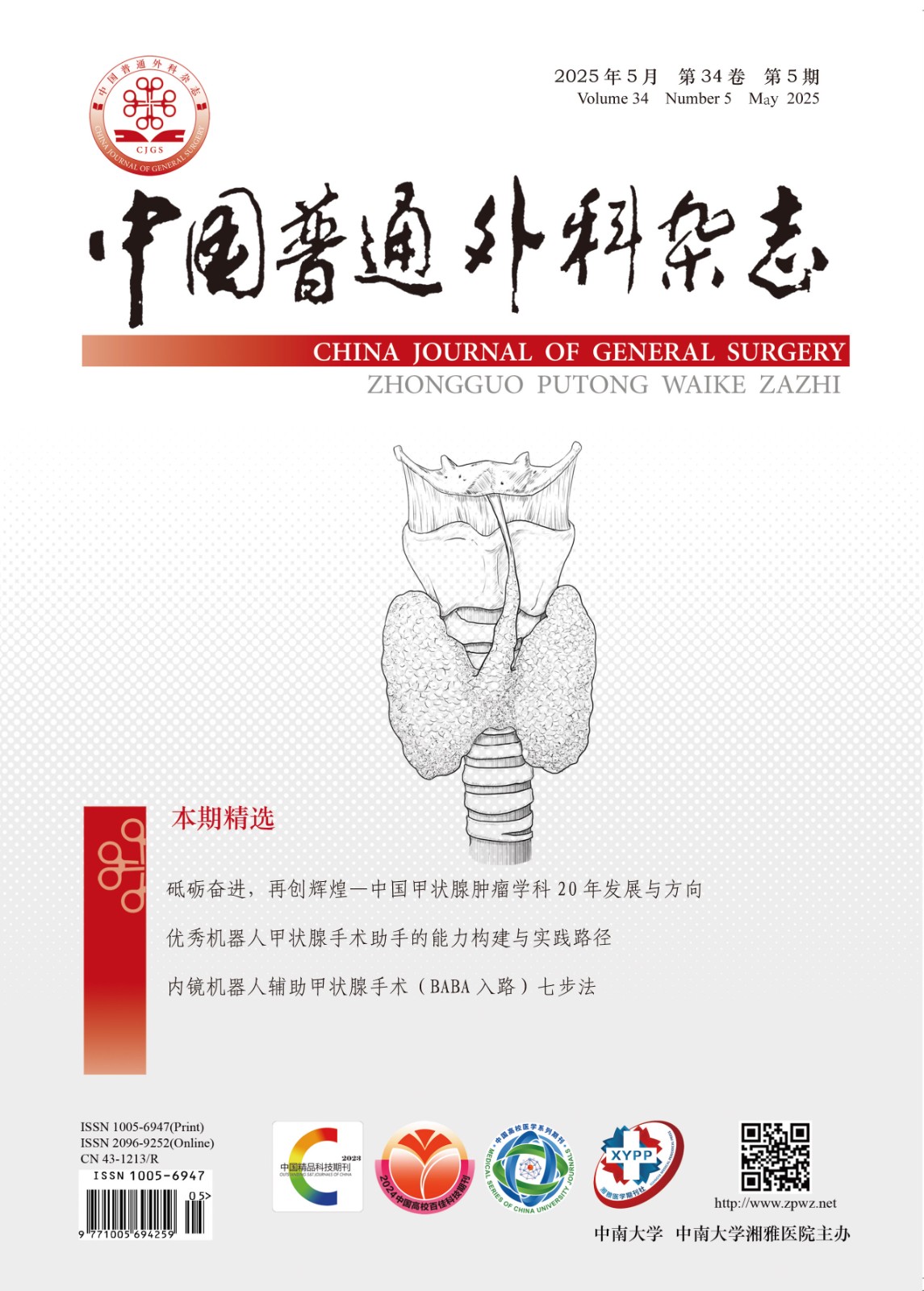Abstract:Objective: To investigate the postoperative survival and factors affecting the prognosis of medullary thyroid carcinoma (MTC).
Methods: The data of 78 MTC patients admitted to Shengjing Hospital affiliated to China Medical University from January 2001 to December 2017 were retrospectively analyzed. The survival rates of the patients were calculated based on the follow-up results, and the prognostic factors were determined by using univariate and multivariate regression analyses.
Results: Of the 78 patients, follow-up was obtained in 74 cases for 3 to 189 months. Ten patients died of the disease and all the remaining patients were alive. The 1-, 3-, 5-, 10-, and 15-year survival rates of the patients were 98.6%, 93.5%, 88.4%, 73.2%, and 73.2%, respectively. Univariate analysis showed that the sex (χ2=6.873, P=0.009) and cervical lymph node metastasis (χ2=4.047, P=0.048), distant metastasis (χ2=23.530, P<0.001), and clinical stage of the tumor (cTNM stage) (χ2=16.067, P<0.001) affected the prognosis of patients; multivariate analysis showed that distant metastasis (HR=54.956, 95% CI=6.341–476.257, P<0.001) and cTNM stage (HR=2.214,
95% CI=1.061–4.619, P=0.034) were independent factors affecting the survival of MTC patients.
Conclusion: Distant metastases and advanced E cTNM stage are important factors for unfavorable prognosis of MTC, and early diagnosis and treatment can ensure the long-term survival of the patients.

